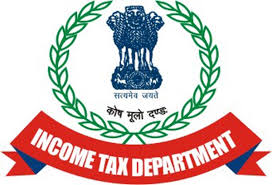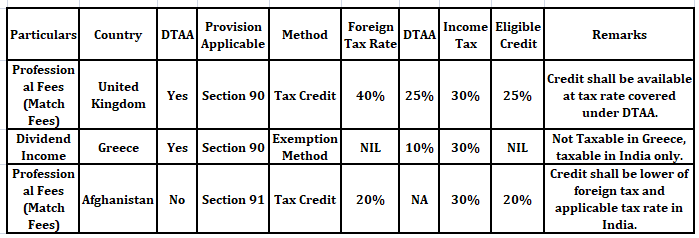
The Income Tax Department has announced the roll-out of a new statement namely Annual Information Statement (AIS) which would provide you with almost all details about your financial transactions during the year. So far, the Income Tax Department has been issuing Form 26AS to provide information related to taxable income and tax deducted at source (TDS), which will now be replaced with the Annual Information Statement (AIS). The new AIS statement will provide comprehensive information of the taxpayer and will be significantly useful while preparing the tax return. The information will be provided in AIS after removing duplicate information and taxpayers can download such information in PDF, JSON, CSV formats.
A taxpayer can submit online feedback if the information is erroneous or refers to another person/year, or is duplicate. The list of Top 50 Transactions to be reported in the New Annual Information Statement are mentioned below.
1.Salary
Employer submits detailed breakup of salary, perquisites, profits in lieu of salary etc paid to the employee in Annexure II of the TDS statement (24Q) of the last quarter. This information is also provided by the employer to the employee (taxpayer) in Part B (Annexure) of Form 16. AIS displays all the financial transactions such as, salary income, dividend income, interest income from saving/fixed deposits, sale and purchase of securities, etc. With the help of all such financial information, it would be easy for a taxpayer to report the correct information in the income tax return
- Rent Received
Tenants responsible for paying rent are liable to deduct tax at source on payment of rent. Deductor reports details of amount paid/credited, date of payment, details of Tax deduction made etc. in Form 26Q. This information is provided by the deductor to the deductee (taxpayer) in Form 16A. Tenant (Individual/HUF) paying a rent of more than 50,000 is liable to deduct tax while making payment to the landlord. Tenant reports details of rent paid amount paid/credited, property details, date of payment and tax deduction details etc. pertaining to rent paid in Form26QC.
- Dividends
Dividend paid/declared by all companies (reporting entity) is reported under Statement of Financial Transactions (SFT). Company paying/distributing dividend is liable to deduct TDS from the amount paid subject to the threshold applicable in the act and report through form 26Q (quarterly statement). This information is provided by the deductor to the deductee (taxpayer) in Form 16A.
- Interest from savings bank
Interest paid/credited/accrued on saving account is reported under Statement of Financial Transactions (SFT).
- Interest from deposit
Bank/deductor at the time paying/crediting interest on deposits is liable to deduct tax from deposit holder paid subject to the threshold applicable in the act. This information is reported by the Bank/deductor in form 26Q (quarterly statement). This information is provided by the deductor to the deductee (taxpayer) in Form 16A.
- Interest from others
Interest paid/credited/accrued on others (other than savings account, term deposit, recurring deposit) is reported under Statement of Financial Transactions (SFT). Bank/deductor at the time paying/crediting other interest (interest on securities) is liable to deduct tax from deposit holder paid subject to the threshold applicable in the act. This information is reported by the Bank/deductor in form 26Q (quarterly statement). This information is provided by the deductor to the deductee (taxpayer) in Form 16A
- Interest from income tax refund
Interest received on Income Tax Refund in the financial year is liable to be taxed as Income from other sources.
- Rent on plant & machinery
Tenant paying rent is liable to deduct tax at applicable rate as per the Act from rent paid. Details of rent on Plant & Machinery is reported by the deductor in TDS form 26Q. Tenant furnishes the details of rent paid on quarterly basis. This information is provided by the deductor to the deductee (taxpayer) in Form 16A.
- Winnings from lottery or crossword puzzle
Payer is liable to deduct tax at applicable rate as per act from winnings from lottery or crossword puzzle etc. Information about winnings is reported by payer in TDS form 26Q. Information is reported on quarterly basis. Income is taxable at special rate. This information is provided by the deductor to the deductee (taxpayer) in Form 16A.
- Winnings from horse race
Payer is liable to deduct tax at applicable rate as per act from winnings from Horse race. Information about winnings is reported by payer in TDS form 26Q. Information is reported on quarterly basis and is chargeable to tax at special rate. This information is provided by the deductor to the deductee (taxpayer) in Form 16A.
- Receipt of accumulated balance of PF from employer u/s 111
Employer/recognised provided fund reports information about accumulated balance due to an employee in form 26Q. Information is reported on quarterly basis and is chargeable to tax at special rate. This information is provided by the deductor to the deductee (taxpayer) in Form 16A.
- Interest from infrastructure debt fund
Information relating to interest paid is reported by payer in form 27Q. Information is reported on quarterly basis and is chargeable to tax at special rate. This information is provided by the deductor to the deductee (taxpayer) in Form 16A.
- Interest from specified company by a non-resident u/s 115A(1)(a)(iiaa)
Information relating to interest paid is reported by payer in form 27Q. Information is reported on quarterly basis and is chargeable to tax at special rate. This information is provided by the deductor to the deductee (taxpayer) in Form 16A.
- Interest on bonds and government securities
Information relating to interest paid is reported by payer in form 27Q. Information is reported on quarterly basis and is chargeable to tax at special rate. This information is provided by the deductor to the deductee (taxpayer) in Form 16A.
- Income in respect of units of non-resident u/s 115A(1)(a)(iiab)
Information about income in respect of units of Non Resident is reported by payer in form 27Q. Information is reported on quarterly basis and is chargeable to tax at special rate. This information is provided by the deductor to the deductee (taxpayer) in Form 16A.
- Income and long-term capital gain from units by an offshore fund u/s 115AB(1)(b)
Information about income and long-term capital gain from units payable to an off shore fund is reported by payer in form 27Q. Information is reported on quarterly basis and is chargeable to tax at special rate. This information is provided by the deductor to the deductee (taxpayer) in Form 16A.
- Income and long-term capital gain from foreign currency bonds or shares of Indian companies u/s 115AC
Information about income and long-term capital gain from foreign currency bonds or shares of Indian companies is reported by payer in form 27Q. Information is reported on quarterly basis and is chargeable to tax at special rate. This information is provided by the deductor to the deductee (taxpayer) in Form 16A.
- Income of foreign institutional investors from securities u/s 115AD(1)(i)
Information about income of foreign institutional investors from securities is reported by payer in form 27Q. Information is reported on quarterly basis and is chargeable to tax at special rate. This information is provided by the deductor to the deductee (taxpayer) in Form 16A.
- Insurance commission
Information about insurance commission received is reported by the payer in Form 26Q on a quarterly basis. This information is provided by the deductor to the deductee (taxpayer) in Form 16A.
- Receipts from life insurance policy
Receipts from life insurance policy are exempt under section 10(10D) subject to conditions specified therein. If such conditions are not met, the receipts become taxable and tax is also deducted u/s 194DA. The information is reported by the payer in Form 26Q on a quarterly basis. This information is provided by the deductor to the deductee (taxpayer) in Form 16A.
- Withdrawal of deposits under national savings scheme
Withdrawals from NSS are taxable. Tax is also deducted on such withdrawals and reported in Form 26Q by the payer on a quarterly basis. This information is provided by the deductor to the deductee (taxpayer) in Form 16A.
- Receipt of commission etc. on sale of lottery tickets
Commission on lottery business is subject to tax deduction under section 194G. The payer reports such information in Form 26Q on a quarterly basis. This information is provided by the deductor to the deductee (taxpayer) in Form 16A
- Income from investment in securitization trust
Income from investment made in securitization trust is subject to tax deduction. The payer reports such information in Form 27Q on a quarterly basis. This information is provided by the deductor to the deductee (taxpayer) in Form 16A.
- Income on account of repurchase of units by MF/UTI
Receipt of income on account of repurchase of units by MF/UTI is subject to tax deduction under section 194F. The payer reports such information in Form 26Q on a quarterly basis. This information is provided by the deductor to the deductee (taxpayer) in Form 16A.
- Interest or dividend or other sums payable to government
Income from interest or dividend or other sums payable is not subject to tax deduction. The payer reports such information in Form 26Q on a quarterly basis. This information is provided by the deductor to the deductee (taxpayer) in Form 16A
- Payment to non-resident sportsmen or sports association u/s 115BBA
Information pertaining to amount paid to non-resident sportsmen or sports association is reported by deductor in form 27Q. This information is provided by the deductor to the deductee (taxpayer) in Form 16A.
- Sale of land or building
Sales consideration of immovable property transferred is reported under Statement of Financial Transactions (SFT). The information will be shown in AIS of all sellers to enable submission of feedback. Sale of immovable property is also reported in Form 61 where PAN is not furnished by the transacting party. PAN is populated based on aadhaar and other attributes of the person. Information related to receipts under specified agreement is reported by person making payment for specified agreement entered into. This information is provided by the deductor to the deductee (taxpayer) in Form 16A.
- Receipts from transfer of immovable property
Information related to receipts from transfer of immovable property is reported by buyer of property in Form 26QB. This information is provided by the deductor to the deductee (taxpayer) in Form 16B.
- Sale of vehicle
Sale of motor vehicle is reported in Form 61 where PAN is not furnished by the transacting party. PAN is populated based on aadhaar and other attributes of the person.
- Sale of securities and units of mutual fund
In the SFT reporting of depository transactions, the estimated sale consideration for the debit transaction is determined on the best possible available price of the asset with the depository (e.g. end of day price). The taxpayer will be able to modify the sales consideration and other related information before filing the return. In the SFT reporting of depository transactions, the estimated sale consideration for the debit transaction is determined on the best possible available price of the asset with the depository (e.g. end of day price). The taxpayer will be able to modify the sales consideration and other related information before filing the return.
- Off market debit transactions
In the SFT reporting of depository transactions, the depository reports details of off market debit transactions. The value of transaction is computed on the basis of end of day price of the security. In case, the consideration is available, the same is also shown.
- Off market credit transactions
In the SFT reporting of depository transactions, the depository reports details of off market credit transactions. The value of transaction is computed on the basis of end of day price
- Business receipts
Information pertaining to amount paid to contractor is reported by contractee in form 26Q. This information is provided by the deductor to the deductee (taxpayer) in Form 16A. Information pertaining to amount paid to the service provider is reported by recipient of services in form 26Q. This information is provided by the deductor to the deductee (taxpayer) in Form 16A
- Business expenses
Information pertaining to purchase of alcoholic liquor is reported by tax collector in TCS form 27EQ (quarterly statement). This information is provided by the collector to the taxpayer in Form 27D.
- Rent payments
Information is reported by person making payment in form 26QC. This information is provided by the deductor to the taxpayer in Form 16C
- Miscellaneous payments
Information is reported by person making payment in form 26QD. This information is provided by the deductor to the taxpayer in Form 16D. Purchase of bank drafts or pay orders may be reported in Form 61 if PAN is not furnished by the transacting party. PAN is populated based on aadhaar and other attributes of the person
- Cash deposits
Information pertaining to cash deposits in an account other than current account is reported by reporting entity in form 61A. The information will be shown in AIS of all account holders to enable submission of feedback. Information pertaining to cash deposits in current account is reported by reporting entity in form 61A. The information will be shown in AIS of all account holders to enable submission of feedback.
- Cash withdrawals
Information pertaining to Cash withdrawals from current account is reported by reporting entity in form 61A. The information will be shown in AIS of all account holders to enable submission of feedback. Sometimes, cash withdrawals from accounts other than current account are reported by the Reporting Entity in SFT-004. The information will be shown in AIS of all account holders to enable submission of feedback. Information pertaining to Cash withdrawals is reported by reporting entity through TDS statement 26Q. This information is provided by the deductor to the taxpayer in Form 16A.
- Cash payments
Information pertaining to Cash payments for goods and services is reported by reporting entity in form 61A. Information pertaining to Purchase of bank drafts or pay orders or banker’s cheque in cash is reported by reporting entity in form 61A. Information pertaining to Purchase of prepaid instruments in cash is reported by reporting entity in form 61A.
- Outward foreign remittance/purchase of foreign currency
Information of outward foreign remittance is reported by authorised dealer in form 15CC. Information about Remittance under LRS for educational loan taken from financial institutions mentioned in section 80E (Third proviso to Section 206C(1G)) is reported by authorised dealer through TCS form 27EQ for specified foreign remittances made by remitter PAN.Information about Remittance under LRS for purpose other than for purchase of overseas tour package or for educational loan taken from financial institution (Section 206C(1G(a))) is reported by authorised dealer through TCS form 27EQ for specified foreign remittances made by remitter PAN.
- Receipt of foreign remittance
Information relating to payment of royalty or fees for technical services etc., paid to non- residents is reported by deductor in form 27Q. This information is provided by the deductor to the deductee (taxpayer) in Form 16A. Information is reported by authorised dealer in form 15CC for foreign remittances made by remitter PAN. Information of receipt of foreign remittance by a remittee is reported by authorised dealer in form 15CC.
- Foreign travel
Information is reported by deductor in TCS form 27EQ (quarterly statement). This information is provided by the collector to the taxpayer in Form 16D. Payment in connection with travel to any foreign country may be reported in Form 61 if the PAN is not furnished by the transacting party. PAN is populated based on aadhaar and other attributes of the person.
- Purchase of immovable property
Information relating to immovable property is reported by the Property Registrar through SFT. The information will be shown in AIS of all buyers to enable submission of feedback. Buyer at the time of making payment towards purchase of property is liable to deduct tax from the amount paid to the seller subject to the threshold applicable. This information is reported in form 26QB. Seller of property reports the details of property buyer in schedule CG of ITR. Payment for purchase of immovable property may be reported in Form 61 if the PAN is not furnished by the transacting party. PAN is populated based on aadhaar and other attributes of the person.
- Purchase of vehicle
Information is reported by deductor in TCS form 27EQ (quarterly statement). This information is provided by the collector to the taxpayer in Form 16D. Payment for purchase of motor vehicle may be reported in Form 61 if the PAN is not furnished by the transacting party. PAN is populated based on aadhaar and other attributes of the person.
- Purchase of time deposits
Information relating to Purchase of Time deposits is reported by reporting entity (such as the bank) in the Statement of Financial Transaction (SFT). Information pertaining to investment in Time deposit is reported in Form 61 where PAN is not furnished by the transacting party. PAN is populated based on aadhaar and other attributes of the person.
- Purchase of securities and units of mutual funds
Information is reported by reporting entity in the Statement of Financial Transaction (SFT). Purchase of shares (including share application money). Information is reported by reporting entity in the Statement of Financial Transaction (SFT). Information is reported by reporting entity (such as mutual fund companies) in the Statement of Financial Transaction (SFT).
- Credit/Debit card
Information pertaining to application for issuance of credit/debit card is reported in Form 61 where PAN is not furnished by the transacting party. PAN is populated based on aadhaar and other attributes of the person.
- Balance in account
Details of bank account other than saving and time deposits opened during the year , as reported in Form 61. Bank account with balance exceeding 50,000 at the closing of Financial year, as reported in Form 61.
- Income distributed by business trust
Information relating to income from units of a business trust is reported by payer in form 27Q. Information is reported on quarterly basis and is chargeable to tax at special rate.
- Income distributed by investment fund
This information is reported by the deductor in Form 26Q on a quarterly basis
The Income Tax Department tracks more comprehensive information about assessees & this facilitates financial transactions from many income sources and expenditures to be captured, in more detail. This needs to be reconciled while filing ITR and proper records to be maintained by all for above list of items, as these are scrutinized by tax department.






